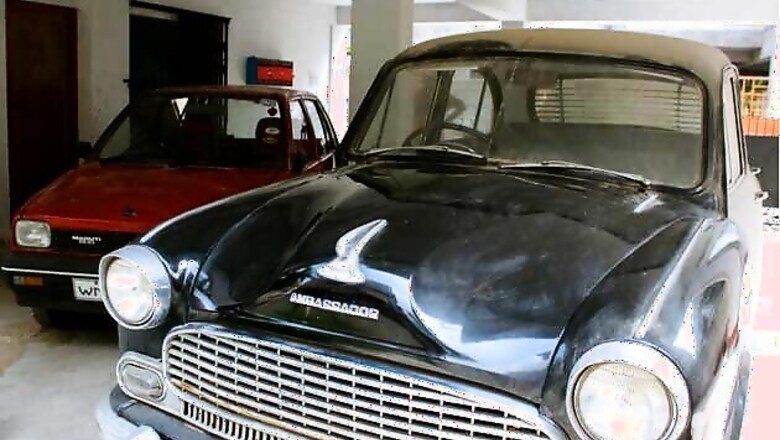
views
It was a Saturday and 52-year-old Subhash Paul was at home when he heard that the factory where he worked for 32 years is now shut. The cycle that he had been using for almost three decades to come to work was lying outside. He grabbed it and rushed to the gate where hundreds of workers were already milling about, confused and angry. The notice of work suspension was slapped on the gate with an old rusty lock confirming his worst fears.
At 10:31 AM, the announcement appeared on the Bombay Stock Exchange website that India's oldest integrated automobile plant will remain closed till further notice. Ambassador, the immutable icon of the Indian roads was on its last journey.
The decline of Ambassador that prided itself as the country's first family car, modelled on the classic British Morris Oxford, was quick, from being a symbol of power and status to a bulky, fuel guzzler awkwardly waddling its way on the Indian roads.
The first big competition came from the sleek and half swadeshi Maruti 800 in the 1980s and then its dominance was fast eroded with the advent of foreign brands with bigger, better and more affordable models.
The sales dropped at an alarming pace. While Maruti continued to reinvent itself by continuing to top the sales charts and phasing out models which were deemed old and redundant, Ambassador remained a relic of the past with the whiff of nostalgia that had lost relevance among young and aspirational Indians.
From 24,000 cars in its heydays in the 1980 the production dropped to a meagre 2,343 cars in 2013 which meant that the 2600 workers employed at the Uttarpara factory produced less than one car a year, far below the industry average.
The workers blame the management for the lack of foresight and the ability to reinvent to stay afloat. Its bulky build, outdated engine, and babu look inspite of its famed comfort and toughness drove the Amby out of competition.

With a pending salary for six months, the workers pedal their way every morning to a makeshift bamboo shelter near the gate at times to protest in front of a few cameras and reporters but more often just to get out of their house to follow the routine of a job.
Flags of Trinamool, CPIM, Congress and an odd BJP are tied at different corners, graffiti with slogans and symbols are quickly painted. The mood is of poriborton where the workers pledge their loyalty to Mamata with the hope that the government will force the management to resume work.

For most of them this was their first job as the company with even a railway station named after it changed the economy of the area and helped thousands to come out of poverty and where being a Hind Motor employee gave them a newfound respect.
Gopal Das who has worked in the assembly unit of the plant for 20 years doesn't know if he can enrol his daughter in a college. Deep in debt after trying to run the family without wages the creditors have refused to loan him any money.
With the certainty of repayment gone, most of the workers can barely manage to make ends meet as there are very few who are willing to lend them money. Today they are too old to rejoin the workforce and find employment elsewhere faced by rising inflation and sudden poverty. Some of the women of the household have taken up sewing to find some money for food and daily expenses.

The workers are hoping for a miracle by West Bengal Chief Minister Mamata Banerjee to force the management to resume production. A tripartite meeting between government, trade union and the government will take place on Thursday, till then the agitation will continue before the question settles - "What after Hind Motors?"
####




















Comments
0 comment